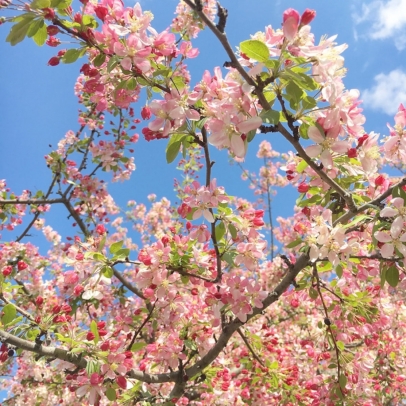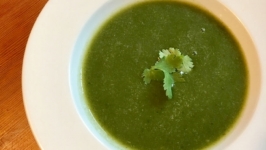A Chinese Medicine Perspective
What foods to eat for balanced well-being during springtime
As the Earth warms and life awakens from a long winter’s nap, yin energy slowly transforms into yang. Nutritious, edible roots and shoots begin to grow, and emerge from the ground to provide food for all animals.
What Is Traditional Chinese Medicine?
In Traditional Chinese Medicine (TCM), we look at all things in terms of yin and yang as presented in nature. The ubiquitous black and white symbol that you’ve seen, no doubt, emphasizes that these two opposing energies depend on each other; they transform into one another; there is not one without the other. Yin is the quiet, female, introspective side of life while yang is the active, male, outward-looking energy.
The balance of yin-yang is the foundation of TCM, as it reflects the interconnections and cycles of nature. TCM looks to and utilizes nature in several ways—to understand the functioning of the human body, to diagnose health conditions and to personalize the best treatments for each individual. It uses nature in food therapy to optimize the nutrients of plants during each season for best overall health.
There are five elements, fundamental to nature, found in TCM: wood, fire, earth, metal and water. Each element corresponds to each temperate season (of which there are five, late summer being its own season) as well as to each major organ system. There are, as well, five different tastes, emotions, colors and other qualities, corresponding to those five elements.
The Meaning of Springtime
Spring is considered the first season of the year, a new beginning for all life forms. It is associated with the liver system; its element is wood, color is green and taste is sour. Springtime has ascending yang energy, a time of growth and expanding activity in nature. There is sensitivity to wind in the spring as the season is unpredictable and transitional. We say in TCM that spring is the manifestation of yin becoming yang.
When yin is transforming into yang the quiet energy slowly awakens, like a young seed pushing up above the ground. This time of year the body is ready to shed the stored, stagnant energy from the winter. It is a natural cleansing time for the body and mind. It is important that we move through it deliberately and lightly, just as one would tend a new seedling emerging from the earth.
To maintain the balance of yin-yang, health and well-being during springtime, TCM suggests lifestyle and dietary changes for optimum health.
What to Eat for Yin-Yang Balance
Springtime food preparation for yin-yang balance and well-being focuses on freshness and simplicity. Emphasis is on raw, young and sprouted green foods, as they have optimum nutrients. Raw and young vegetables are also thought to bring about renewal by reminding the body of the earlier, more youthful stages of human development. If not raw, spring food is best cooked for a shorter amount of time at higher temperatures to preserve its most vital nutrients.
Because spring is pertinent to the liver organ system, we must be aware of foods that impact the liver. In TCM, the liver system establishes and ensures a smooth flow of energy throughout the body (we call this energy, Qi). When in balance, there is no stress or tension. People with vital liver energy are calm and relaxed. They also can be strong decision makers. When obstructed and unbalanced, liver Qi becomes excessive, and the flow of energy is hampered, resulting in physical and emotional problems from muscle tension to dizziness, from outbursts of anger and aggression to clinical depression. These challenges are more prominent in springtime especially for people who struggle with excessive stress and tension in their lives.
For people with excess liver energy, it is recommended to stay away from sour foods like lemons, limes, sour fruits and vinegar, especially during springtime. It is also important to avoid salty foods in the spring because they have strong sinking energy resulting in more liver stagnation and unbalance. Some of the foods to avoid include soy sauce, miso and sodium-rich meats.
To tame excessive liver energy, foods that are naturally, but slightly, sweet and pungent are recommended. In early spring, try cabbage, sweet potatoes and beets. As the season changes, increase peas, mushrooms, sweet rice and sprouts and young greens. Whole grains, coconut milk, black sesame and celery are all beneficial in spring cooking. If you like flavorful tastes, try adding pungent cooking herbs such as basil, fennel, marjoram, rosemary, dill or bay leaf to your spring dishes.
Spring is a wonderful time to shed excess weight from the winter months. We can take advantage of the cleansing nature of spring by eating less and eating lighter, and by avoiding overeating and overindulging. The increase in green colors and sights of growth in nature will nourish the soul through our eyes, which will help decrease appetite for food. Emotionally, it’s a time for connecting with your true nature, giving attention to self-awareness and self-expression. Mindful practices and regular exercise, preferably outdoors, are highly recommended to keep the liver energy balanced, a state which will benefit your entire mind and body.






